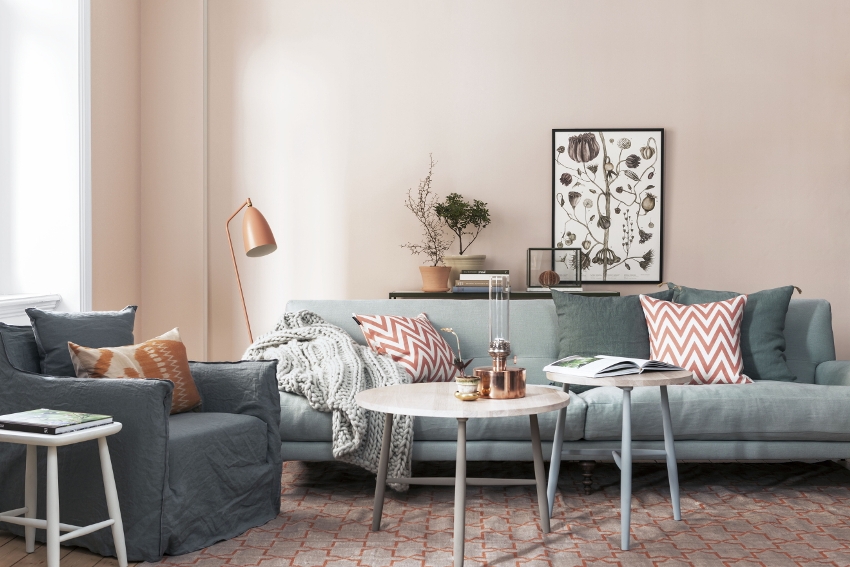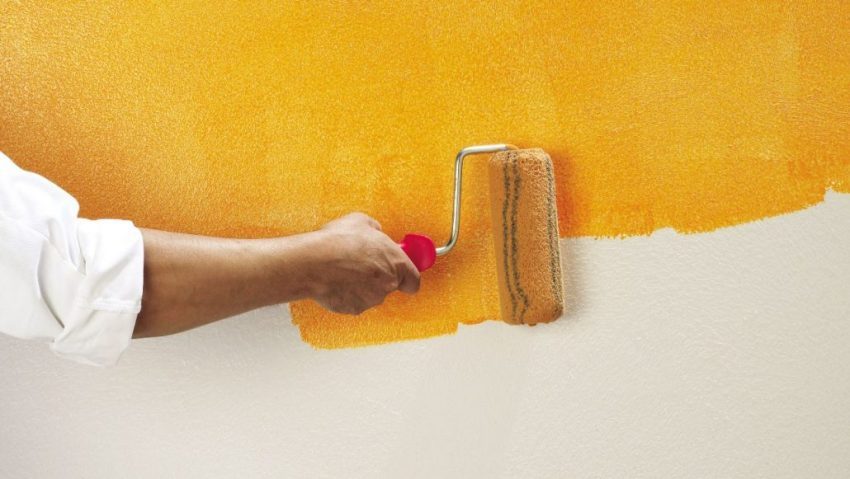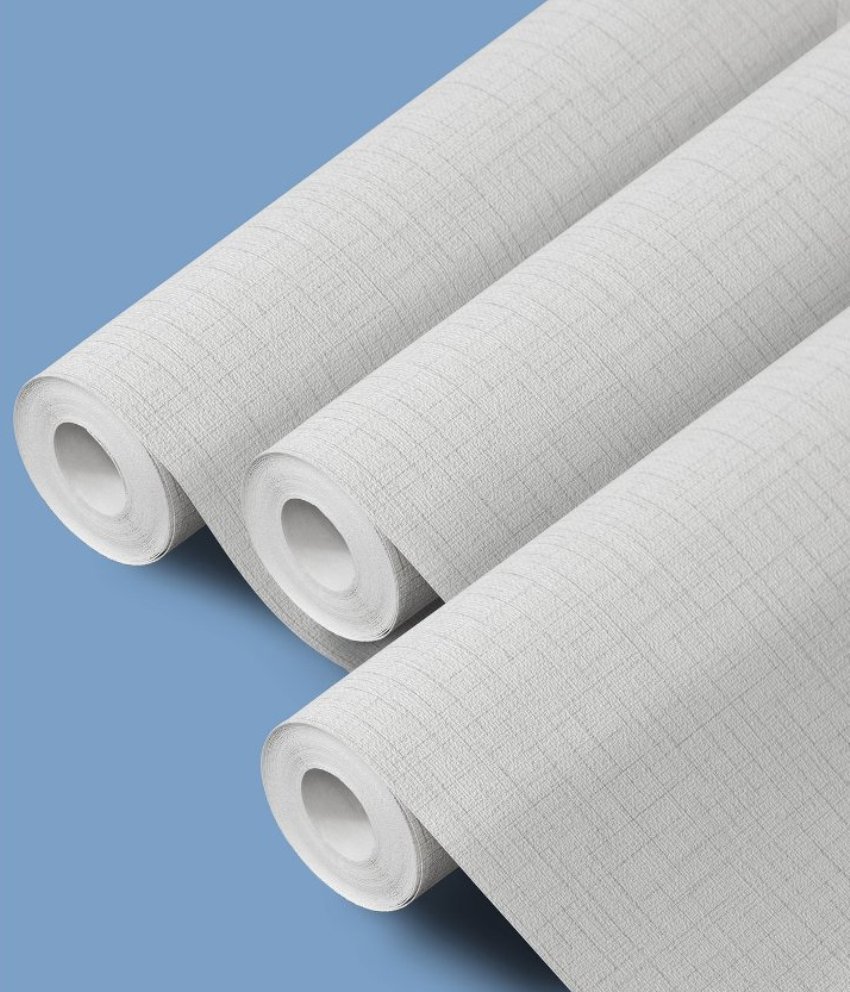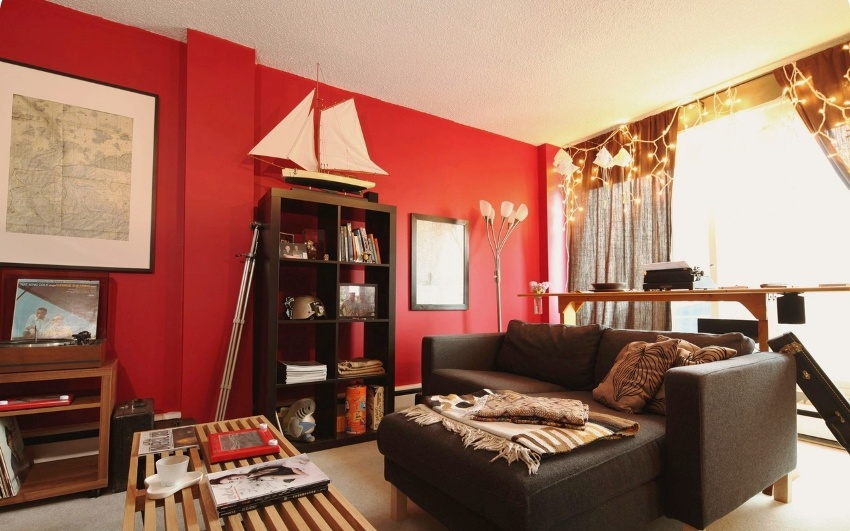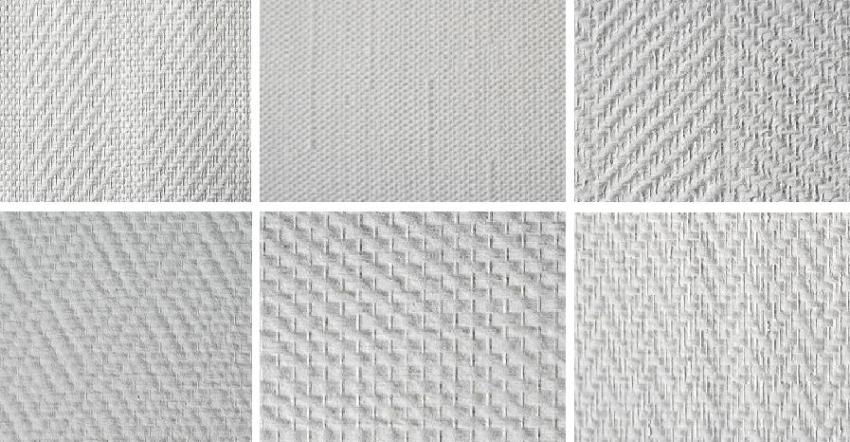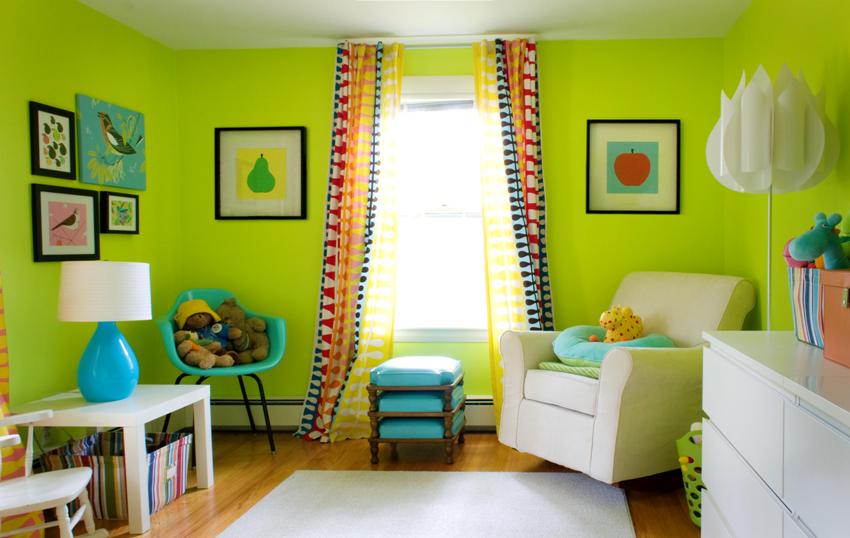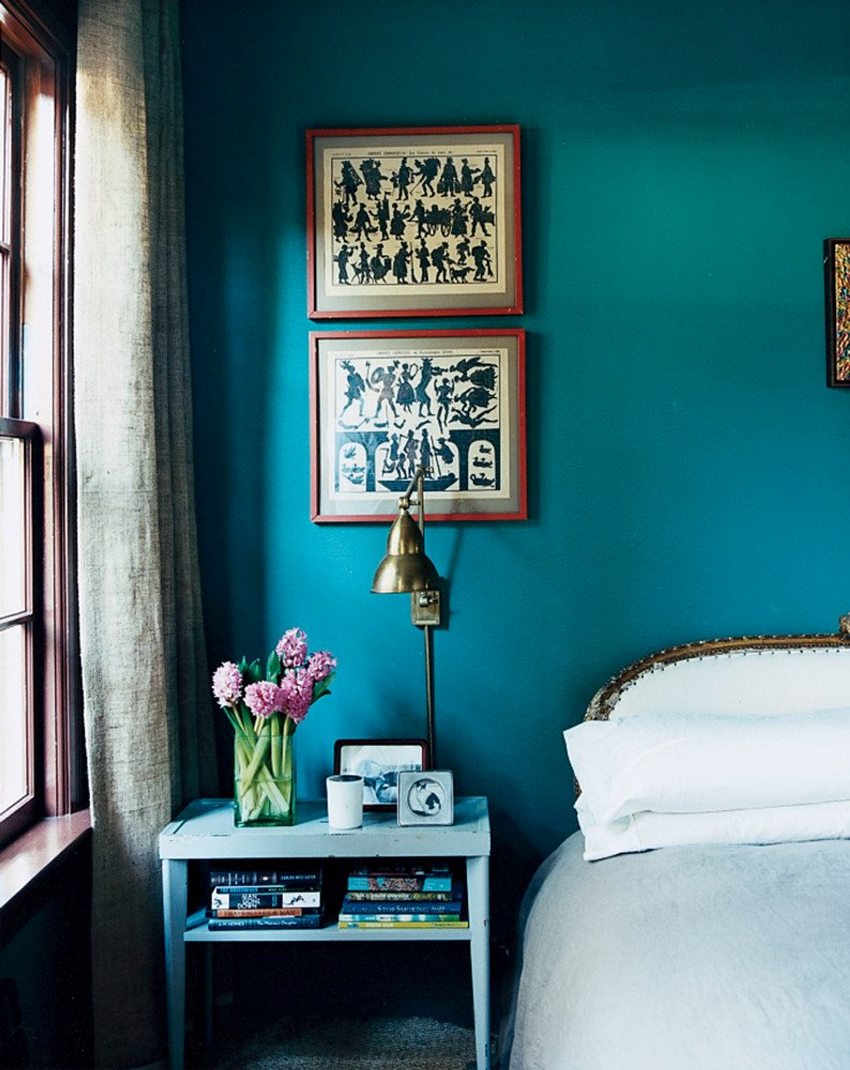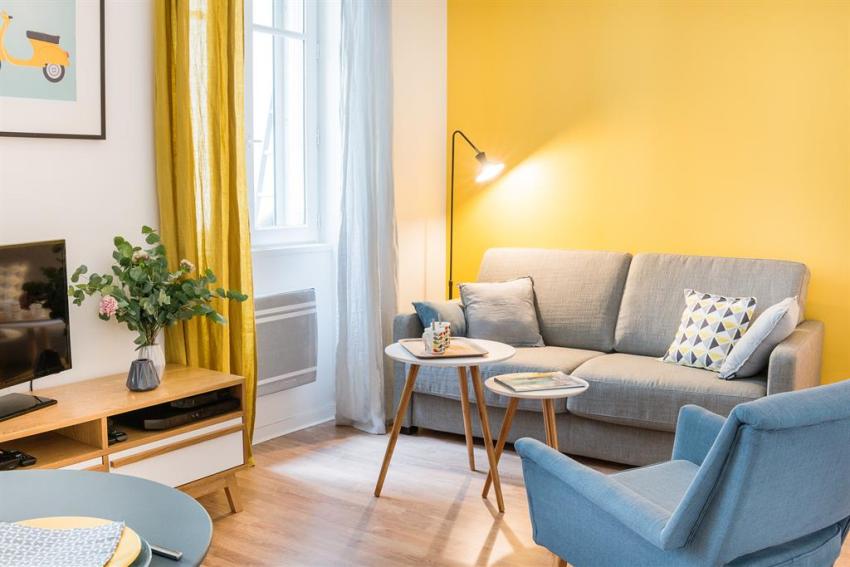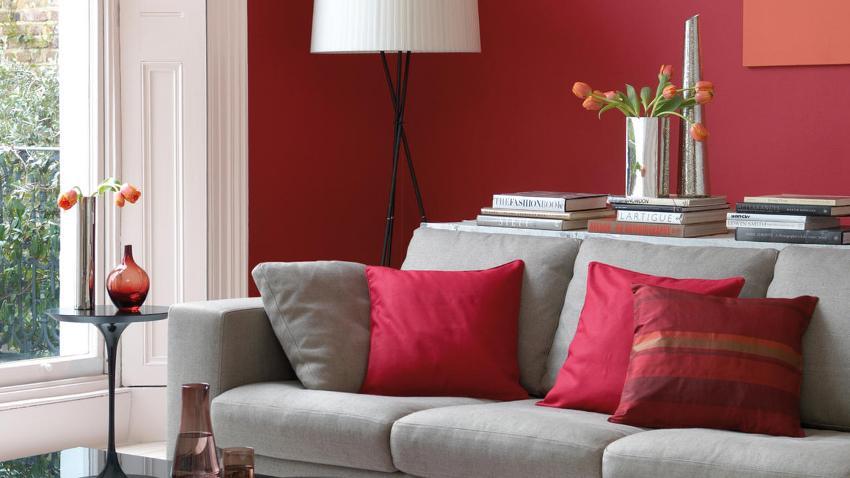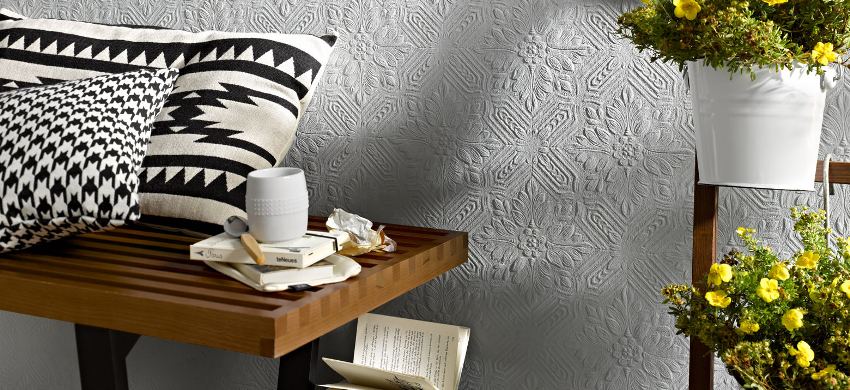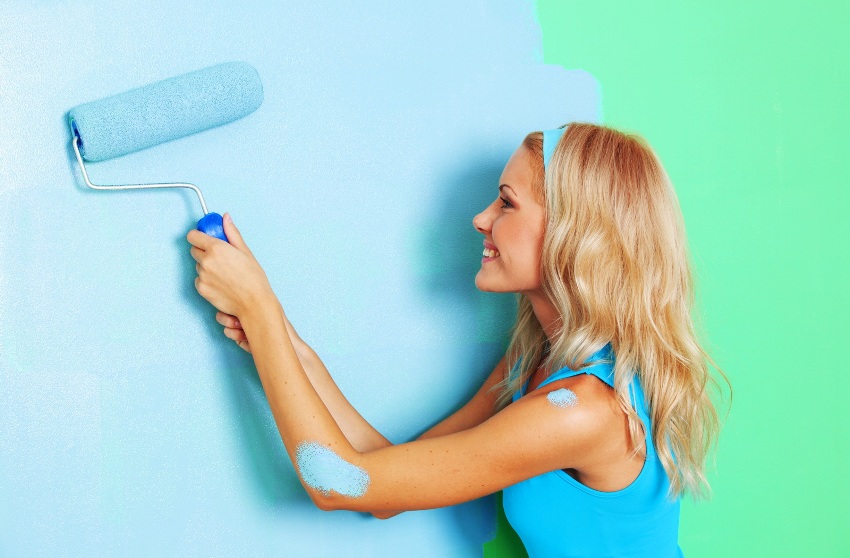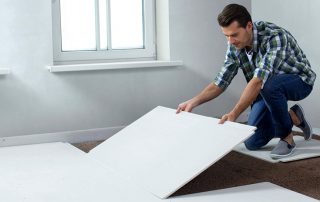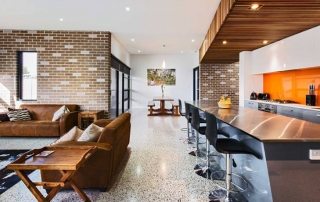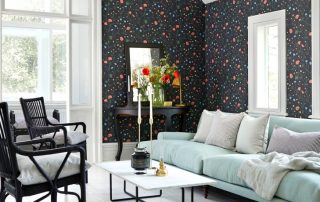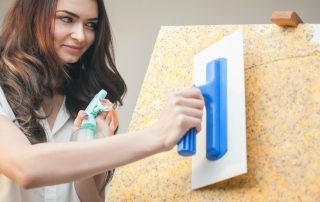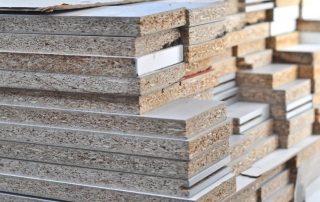From this article you can find out what properties and characteristics the paint for wallpaper for painting has, and familiarize yourself with the conditions suitable for its use in a residential-type room. The article considers the feasibility of using wallpaper as a basis for painting, and the advantages of this approach to wall decoration, as well as the variety of coloring compositions suitable for decorating canvases, their compatibility with different materials.
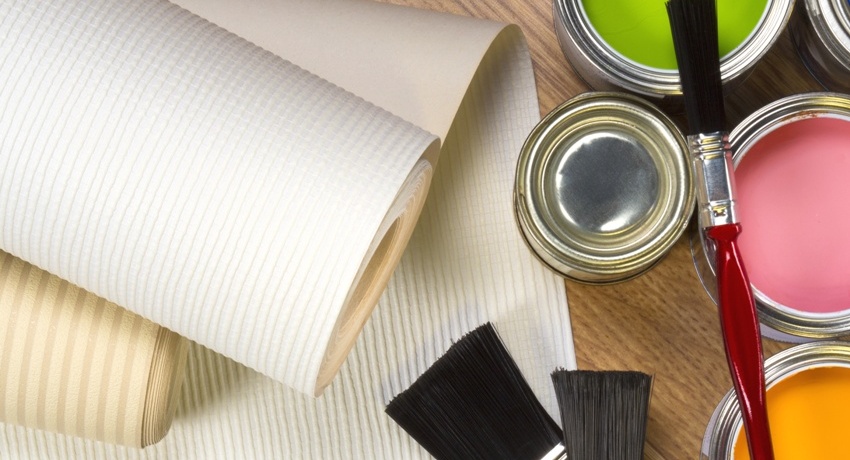
Paints for wallpaper for painting presented in a wide color palette
Content [Hide]
- 1 Home decoration, which is better: wallpaper or wall painting
- 2 Paint for wallpaper for painting: choosing the optimal material
- 2.1 What wallpapers can be painted: general information on finishing
- 2.2 Is it possible to paint the wallpaper not for painting: requirements for an ordinary base
- 2.3 Can non-woven wallpaper be painted: material requirements
- 2.4 Can vinyl wallpaper be painted: product types
- 2.5 Varieties of paints for wallpaper for painting: which composition is better to choose
- 3 Using wallpaper for painting: how to glue and paint canvases
Home decoration, which is better: wallpaper or wall painting
It may seem to many apartment owners that it is more expedient to paint the walls in the room instead of wallpaper, photos of rooms with a similar finish look no worse. However, there are a number of features that can affect the choice of finishing material.
Painting the walls, as well as gluing wallpaper for painting, equally allow you to give the interior the necessary color and refresh it.
To determine which finishing option is more acceptable for the room, the following nuances should be considered:
- condition of the walls (presence of defects);
- strength characteristics of the coating, how simple is the dismantling system;
- prices for the purchase of materials, as well as prices for the services of professionals.
Paint walls or wallpaper: evaluating the surface condition and choosing a finish
The most important criterion in choosing a dye or wallpaper for wall decoration is the condition of the surfaces. Coloring compounds are not capable of masking cracks and irregularities that may be present in plaster. In order to achieve a high-quality result, the damaged surface in this case will have to be completely renewed, which will significantly affect the timing and cost of finishing work.
In the presence of damage on the surface of the walls, it is more advisable to use wallpaper with thick webs and textured surfaces, for example, embossed vinyl wallpaper or non-woven wallpaper.High quality materials will effectively hide base errors without additional preparation. If the plaster on the walls is in excellent condition, you can do with the usual surface painting. This procedure is much cheaper than wallpaper and takes less time.
Well-chosen wallpapers are able to keep their surface in perfect condition for several years. Modern materials made of vinyl and non-woven fabric are highly resistant to stains and moisture. It is allowed to clean the surface of the canvases with a damp sponge and detergents. As a last resort, you can paint non-woven wallpaper and update their appearance. Even a high-quality dye does not have such advantages, therefore painting canvases are considered a more practical and durable option.
Useful advice! Non-woven wallpaper can be painted if there is no serious damage to the canvases. Before buying paint, you should make sure that the finish fits snugly against the wall and that there are no delaminations, otherwise there is no point in purchasing a composition for updating the surface.
Paint for wallpaper for painting: price materials for wall decoration
In terms of cost, paint wins as an independent finishing material. The cheapest version of the composition has an acrylic base (from 400 rubles). A 10 liter can is sufficient for two-layer painting of walls in a 100 m² room (provided that a primer is used). Latex-based dyes are more expensive than acrylics. The price of staining the same surface with Dulux (from 700 rubles) will be 4 times more expensive. The most expensive dye option is ceramic. This coating is characterized by a high level of strength and color intensity.
The cost of wallpaper can be very different. The most budgetary option is paper products (from 400 rubles / roll). Non-woven fabrics (from 800 rubles / roll) and vinyl canvases (from 600 rubles / roll) are slightly more expensive. They can be a durable and optimal solution, especially when it comes to buying paintable wallpaper. Fiberglass materials and products from author's collections are the most expensive types of finishes, therefore they are used less often.
The cost of gluing and painting wallpaper (price per m2):
| Name of service | price, rub. |
| Application of a primer for painting | 40 |
| Dismantling the old coating | 70 |
| Wallpaper gluing for painting | 200 |
| Two-layer staining | 240 |
| Plastered walls in 2 layers under the wallpaper | 250 |
Using wall paint will be the most economical and quickest solution if the substrate surfaces are in good condition. Otherwise, it is better to give preference to wallpaper. When the colors of the canvases get tired or dirt appears, you can buy wallpaper paint for painting the shade you like and change the design.
The range of wallpapers is varied. Products that imitate the surface of various materials are in special demand among consumers. They can be used to decorate the entire perimeter of the room or its individual sections. Thanks to this, it becomes possible to effectively and inexpensively carry out zoning of space or create visual accents.
Relief canvases allow you to choose the required surface texture, and with the help of paint for wallpaper, you can easily and quickly change the shade of the coating. This procedure is relatively inexpensive and in a decorative sense is much more profitable than conventional staining.
Note! The color of the wallpaper can be changed 3 to 10 times. It depends on the type of material and its properties.
Paint for wallpaper for painting: choosing the optimal material
Before purchasing materials for wall decoration, you need to figure out which wallpaper can be painted and which paint is suitable for the selected type of base. A general idea of the canvases, their properties and technical characteristics will allow you to make the right choice.
As a basis for painting, wallpapers with different types of surfaces are used:
- textured;
- smooth;
- patterned.
It should be borne in mind that wallpaper imitating the texture of natural wood is inappropriate to paint in blue or, for example, lilac. If you intend to decorate the walls in a children's room, it is better to choose cheerful shades that will be applied over a neutral base with a suitable theme or pattern with a slight relief.
What wallpaper can be painted: general information on finishing
Most often, paintable wallpaper is used when there is a need for a regular change of finish. This is due to various reasons:
- the desire of the apartment owner to constantly update the interior;
- getting on the coating of pollution due to special operating conditions typical for the bathroom, kitchen, hallway;
- mechanical damage to the surface, typical of rooms with a high level of traffic or children's rooms.
When it comes to serious surface loads, many apartment owners have a question whether it is possible to paint a certain type of wallpaper and how often such a procedure is allowed. Canvases for painting are often used in children's rooms, where it becomes necessary to eliminate the arts that kids leave on the walls. It is not recommended to change the color of paper and vinyl sheets too often. Such a material is not subject to rapid deoxidation and the likelihood that the finish will fall off is very small, but it will not last as long as we would like.
Also, buyers are interested in whether it is possible to paint wallpaper with water-based formulations, since not all types of coatings are able to withstand contact with liquid. The best option for frequent repainting is wallpaper with waterproof properties. This category also includes products that are glued with water-based glue.
The dye is selected based on personal preference, but it is advisable to take into account the instructions that come with the wallpaper. The composition should not overlap the texture of the coating or create difficulties when painting wallpaper for painting with your own hands.
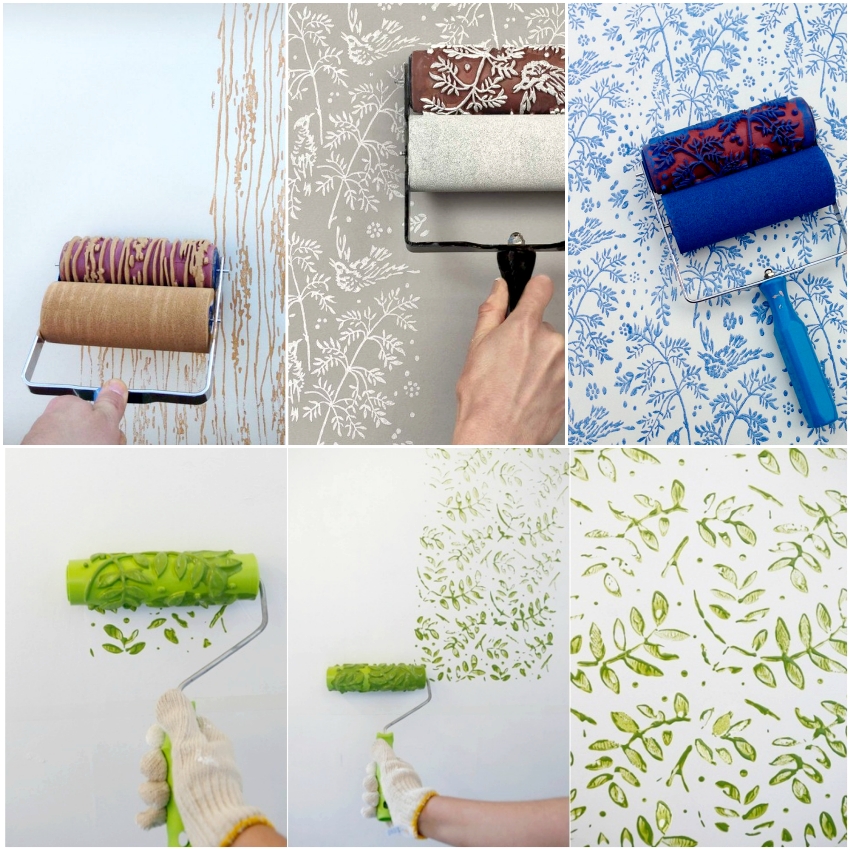
Drawing options using decorative roller
The safety of the dye (absence of toxic fumes) must be shown at all stages:
- preparation of material for staining;
- applying the composition over the wallpaper;
- operation throughout the entire service life.
Important! After carrying out repair work, enamel, intended for processing door and window structures, or facade dye may remain. The use of these materials for processing wallpaper on the walls of residential premises is not allowed.
Is it possible to paint the wallpaper not for painting: requirements for a common base
The traditional type of wall decoration is paper wallpaper. Most of them are not intended for coloring. Common types of canvases are also found among such common types of finishes as non-woven and vinyl wallpaper. In order not to dismantle the old coating and glue the new material, many apartment owners are wondering whether it is possible to paint the wallpaper not for painting in order to save their own efforts and time. Care should be taken in this situation.
Experts say that you should not resort to coloring ordinary wallpaper, the characteristics of which do not provide for this procedure. Not only single-layer but also double-layer wallpapers can suffer from the use of dye.
Some types of canvases are not able to provide a uniform application result. If paper wallpaper from an inexpensive segment is used as decoration, staining can lead to negative consequences:
- the appearance of bubbles;
- peeling off the canvases from the wall;
- deformation and spreading of the material.
For this reason, it is better to dismantle the old coating and stick on the canvases intended for painting.
Can I paint non-woven wallpaper: material requirements
Non-woven wallpaper has many advantages. They are durable, not prone to tearing and stretching when wet. Their non-woven base plays the role of a kind of reinforcing layer that prevents the appearance of small cracks in the base surface. The process of gluing the material is very simple, so the question of whether it is possible to paint non-woven wallpaper in the room is very relevant.
When buying, you should pay attention to the manufacturer's markings. Products that are not intended for coloring, without damage to the finish, can be coated with a coloring compound no more than 1-2 times. On wallpaper marked "for painting" the composition fits much better than on ordinary canvases. Such products are durable, less prone to deformation. Their use eliminates the possibility of wallpaper incompatibility with the dye.
Note! According to the information declared by the manufacturers, high-quality non-woven wallpaper can be repainted up to 10-15 times. In practice, it is advisable to do this procedure no more than 6-8 times, otherwise the decorative properties of the coating are significantly reduced.
Can I paint vinyl wallpaper: product varieties
To decide whether it is possible to paint vinyl wallpaper, and how best to perform this procedure, you should understand the features of the existing range of products.
There are three types of vinyl sheets:
- Foamed.
- Kitchen.
- Flat.
Foamed vinyl is a thick material on a roll. It can be used to mask wall defects. Smooth and embossed coating options are on sale. Moreover, the wallpaper can be both colored and neutral, for example, beige or white. Due to the presence of a thick PVC layer, this type of finishing material is susceptible to mechanical damage.
The staining procedure will create a protective layer on the surface of the canvas, which will reduce the likelihood of damage and scratches when in contact with various objects.
Kitchen products are classified as special-purpose wallpapers. Their canvases are very dense. Since the decoration in the kitchen needs regular cleaning, the surface of such wallpaper is endowed with a weakly pronounced embossed pattern. The advantage of kitchen products is practicality. Dirty finish surfaces are easy to clean or repaint. This wallpaper can be combined with any kind of interior paint.
Flat wallpaper is the only type of vinyl that is not suitable for painting. Such canvases are decorated with multi-colored ornaments that will completely disappear if you use a tinting composition.
Varieties of paints for wallpaper for painting: which composition is better to choose
Each type of wallpaper puts forward its own requirements for the composition. To decide what paint to paint the wallpaper, it is enough to decide on the choice of material for pasting the walls.
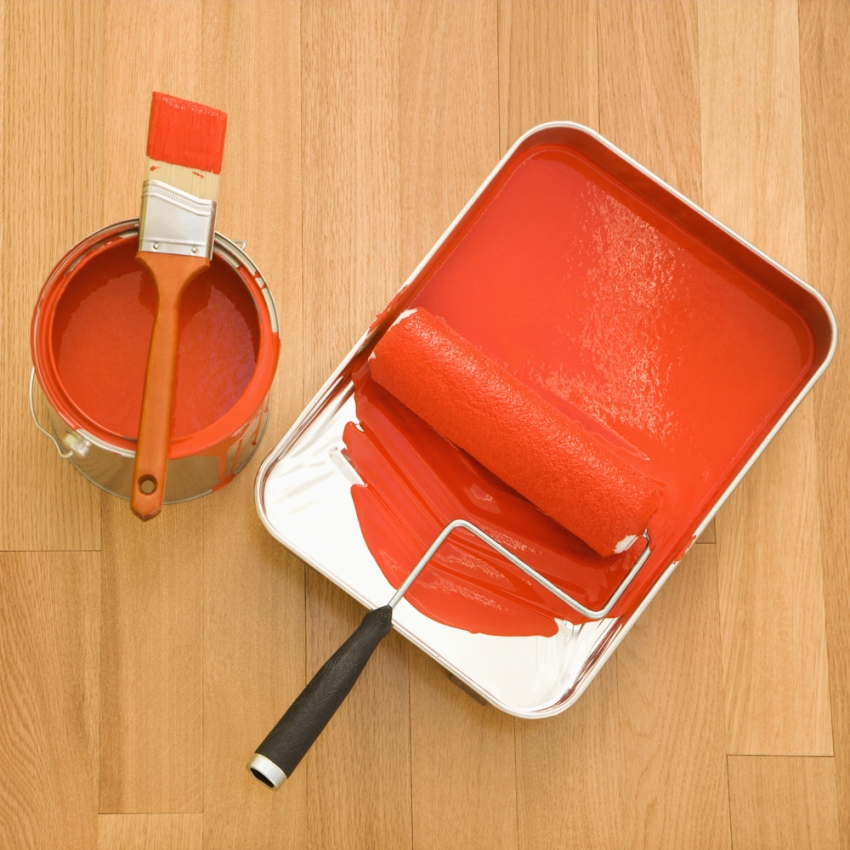
Modern versions of the paint material are considered environmentally friendly and do not contain harmful impurities.
Paper canvases can be combined with almost any type of paint. The best option for these purposes is a latex-based composition. Such dyes do not make paper canvases heavier and lay on top of them in a very thin layer. The technical characteristics of latex formulations have a positive effect on the performance properties of the finish.
Useful advice! To save on dyeing paper wallpaper, you can use a water-based composition.
Water-based dyes are not recommended for non-woven wallpaper. In this case, it is preferable to use acrylic or latex formulations. This type of wallpaper can be painted both from the front side and from the back.
How to paint the back side of the wallpaper for painting:
- The dye is applied to the wrong side of non-woven fabrics.
- The material must be left for a while to dry the composition.
- The wallpaper is glued to the wall according to standard technology.
After the glue dries, paint will come out on the front side of the canvases. In areas where the top polymer layer is missing, the shade will differ from the main background. Only acrylic paint can be used for processing vinyl sheets. Since this type of material is partly non-woven, painting on the back is allowed.
Fiberglass wallpapers are perfectly combined with latex and acrylic compositions. The use of wallpaper glue diluted with water as a primer will reduce the consumption of dye. Fiberglass cloths need two-layer painting with a break of 12 hours between applications.
The choice of paint colors for paintable wallpaper is an important component of a beautiful design. The following shades are most often used for finishing residential premises:
- cream and beige;
- brown and sandy;
- pale pink and peach;
- yellow and light green;
- caramel and apricot;
- blue and milky.
Useful advice! To minimize the number of seams, it is recommended to select paintable wallpaper with wide webs.
According to the degree of light reflection, the following types of paints are distinguished:
- Glossy.
- Semi-glossy.
- Matt.
- Semi-matt.
- Satin.
It is advisable to test the composition on an inconspicuous area before painting the wallpaper, painting the wallpaper can be started only after the glue has completely dried (at least a day).
Using wallpaper for painting: how to glue and paint canvases
Regardless of the type of wallpaper chosen, interior finishing work begins with the preparation of the room and surfaces. It is necessary to remove all furniture from the room or move it to the side, covered with textiles or film. It is also recommended to glue the skirting boards and cover the floor.
Experts do not recommend using a brush to paint wallpaper. For this purpose, it is better to take a foam roller. The tool must necessarily absorb the paint well and, at the same time, do not spray the composition during application to the walls. Do not use an old attachment. The tool must be new.
What roller to paint the wallpaper for painting:
- Small nozzle for hard-to-reach areas (no more than 10 cm).
- Large nozzle for even distribution of the colorant over large areas (approx. 25 cm).
Wallpaper gluing is carried out in accordance with the manufacturer's requirements. This takes into account the type of wallpaper: paper canvases, non-woven, fiberglass or vinyl. It is not recommended to overlap strips of material. It is better if the canvases are located end-to-end.
How to paint paintable wallpaper:
- The paint is mixed until smooth and poured into a plastic tray.
- The roll is impregnated with colorant by rolling on the tray.
- Squeeze out excess composition using the embossed part of the tray.
- Work should be started from the upper corner zone of one of the walls, rolling the roller from the bottom up.
- Each next strip of paint is applied with partial overlap of the previous one to avoid gaps.
Skirting areas and other hard-to-reach areas can be finished with a brush. When the first coat of paint is dry, the second coat can be applied. The process of dyeing wallpaper is quite simple, so anyone can cope with this task. In stores, you can buy any shade of the dye ready-made or order a computer-assisted pigment selection service.
